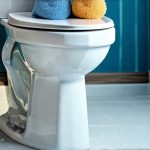Frequent trips to the bathroom can significantly disrupt daily life, causing anxiety, social awkwardness, and even physical discomfort. It’s an experience many people face, stemming from a wide range of causes – dietary choices, underlying medical conditions, lifestyle factors, or simply individual physiology. While often viewed as inconvenient, understanding why these frequent trips occur and developing practical strategies for management can dramatically improve quality of life. This isn’t about eliminating the need to go; it’s about regaining control and minimizing disruption, fostering a sense of normalcy, and reducing stress associated with bladder or bowel urgency.
The impact extends beyond mere inconvenience. Constant worry about access to facilities, fear of accidents, and the mental load of planning activities around bathroom breaks can take a toll on emotional wellbeing. Many individuals find themselves limiting social interactions, avoiding travel, or experiencing increased levels of anxiety. Recognizing this is crucial: frequent bathroom trips aren’t just a physical issue; they have substantial psychological consequences as well. This article will explore strategies to navigate these challenges, focusing on practical steps you can take to comfortably manage the situation and reclaim your freedom.
Understanding the Root Causes & Initial Assessment
Pinpointing the reasons behind frequent urination or bowel movements is the first step toward effective management. It’s rarely a one-size-fits-all scenario, as triggers vary widely. Common culprits include:
– Dietary factors: Caffeine, alcohol, spicy foods, and artificial sweeteners can all irritate the bladder and/or intestines.
– Fluid intake: Drinking excessive amounts of fluids, especially quickly, or consuming diuretic beverages (tea, coffee) can increase frequency.
– Medical conditions: Conditions like overactive bladder (OAB), urinary tract infections (UTIs), irritable bowel syndrome (IBS), Crohn’s disease, and diabetes can all contribute to increased urgency.
– Medications: Certain medications, such as diuretics, have a well-known side effect of increasing urination frequency.
– Lifestyle factors: Stress, anxiety, and even physical inactivity can play a role.
A careful self-assessment is valuable. Keep a diary for a few days to track: what you eat and drink (including portion sizes), when you need to use the bathroom, the level of urgency experienced, and any associated symptoms (pain, discomfort, etc.). This information will be helpful if you consult with a healthcare professional. It’s important to remember that self-diagnosis isn’t advisable. If your frequent trips are new, sudden, or accompanied by other concerning symptoms like pain, blood in urine or stool, fever, or significant weight loss, seek medical attention promptly. A doctor can rule out underlying conditions and provide appropriate guidance. Furthermore, if you experience these issues while traveling, consider reading up on how to lower bathroom trips during commutes for helpful tips.
Initial lifestyle adjustments often yield positive results. Reducing caffeine and alcohol consumption, moderating fluid intake (spreading it throughout the day rather than drinking large amounts at once), and incorporating stress-management techniques are all excellent starting points. These changes won’t eliminate the issue entirely for everyone, but they can often significantly reduce frequency and urgency. Furthermore, consider your bowel habits; adequate fiber intake promotes regularity and can prevent constipation which sometimes exacerbates bladder pressure.
Practical Strategies for Daily Life Management
Living with frequent bathroom trips requires proactive planning and adaptation. This isn’t about changing who you are; it’s about optimizing your life around the situation, minimizing anxiety, and maintaining a sense of control. One key element is pre-planning routes and identifying accessible facilities. Before leaving home or embarking on any journey, research restroom locations along the way – many apps now specifically cater to this need. Carry a small “go bag” containing essentials like extra underwear (just in case!), wet wipes, and a change of clothes for peace of mind.
Beyond physical preparation, mental strategies are equally important. Practice mindfulness techniques to manage anxiety associated with urgency. Deep breathing exercises, meditation, or even simply focusing on your surroundings can help calm the nervous system and reduce perceived urgency. Acceptance is also key. Acknowledge that these trips are part of your current reality, and avoid dwelling on negative thoughts or self-criticism. This doesn’t mean you shouldn’t seek solutions; it means accepting the present moment allows for more rational thought and proactive management.
Finally, don’t be afraid to communicate with others. If you’re comfortable doing so, inform trusted friends, family members, or colleagues about your situation. This can alleviate pressure in social settings and allow them to offer support when needed. Remember that most people are understanding, and open communication fosters a more supportive environment. For women experiencing these issues, learning how to manage urinary triggers in women can be helpful.
Pelvic Floor Exercises & Bladder Training
Strengthening the pelvic floor muscles—the group of muscles that supports the bladder, bowel, and uterus (in women)—can significantly improve bladder control and reduce urgency. These exercises, often called Kegels, are relatively simple to perform:
1. Identify the correct muscles: Imagine you’re trying to stop the flow of urine midstream. The muscles you engage are your pelvic floor muscles. Avoid actually stopping the flow during exercise, as this can be counterproductive.
2. Perform the exercises: Contract these muscles for 3-5 seconds, then relax for 3-5 seconds. Repeat 10-15 times.
3. Consistency is key: Aim to do these exercises several times a day.
Regular practice over time can lead to noticeable improvements in bladder control and reduced leakage. However, it’s vital to perform Kegels correctly; if you’re unsure, consider consulting with a physical therapist specializing in pelvic floor rehabilitation. They can provide personalized guidance and ensure proper technique.
Bladder training involves gradually increasing the intervals between bathroom trips. The goal isn’t to hold on indefinitely but to retrain your bladder to accommodate larger volumes of urine. Begin by noting how often you currently urinate. Then, try to add 15-30 minutes to the interval between trips. If you experience urgency before the scheduled time, use distraction techniques (deep breathing, mental games) to delay urination until the allotted time. Over time, gradually increase the intervals further. This process requires patience and consistency but can be highly effective in reducing frequency.
Dietary Adjustments & Fluid Management
As previously mentioned, dietary choices play a significant role in bladder and bowel function. Beyond limiting caffeine, alcohol, and artificial sweeteners, consider specific foods that may exacerbate symptoms. For example, acidic fruits (citrus, tomatoes) can irritate the bladder in some individuals. Similarly, spicy foods can trigger IBS symptoms and increase urgency. Experiment with eliminating potential triggers one at a time to identify what affects you personally. Maintaining a food diary alongside your bathroom diary can be incredibly helpful.
Fluid management isn’t just about how much you drink but also when and what. Spreading fluid intake evenly throughout the day, rather than gulping down large amounts at once, is ideal. Aim for 6-8 glasses of water daily, but adjust based on your activity level and climate. Avoid drinking fluids close to bedtime to reduce nighttime trips. Consider that some beverages contribute more to hydration than others; water is obviously best, while sugary drinks offer minimal benefit. Frequent trips to bathroom after mild drinks might also provide insight into potential dietary triggers.
Addressing the Psychological Impact & Seeking Support
The emotional toll of frequent bathroom trips should not be underestimated. Anxiety, embarrassment, and social isolation are common consequences. Acknowledging these feelings and seeking support is crucial. Talk to a therapist or counselor if you’re struggling with anxiety or depression related to your condition. They can provide coping mechanisms and strategies for managing stress.
Support groups—both in-person and online—offer a safe space to connect with others who understand what you’re going through. Sharing experiences, learning from each other, and receiving encouragement can be incredibly empowering. Remember that you are not alone, and there is help available. Don’t hesitate to reach out.
Finally, practice self-compassion. Be kind to yourself and avoid dwelling on setbacks. Managing frequent bathroom trips is a journey, not a destination, and it’s okay to have days where things are more challenging than others. Focus on progress, celebrate small victories, and remember that you deserve to live a full and comfortable life despite this condition.





















